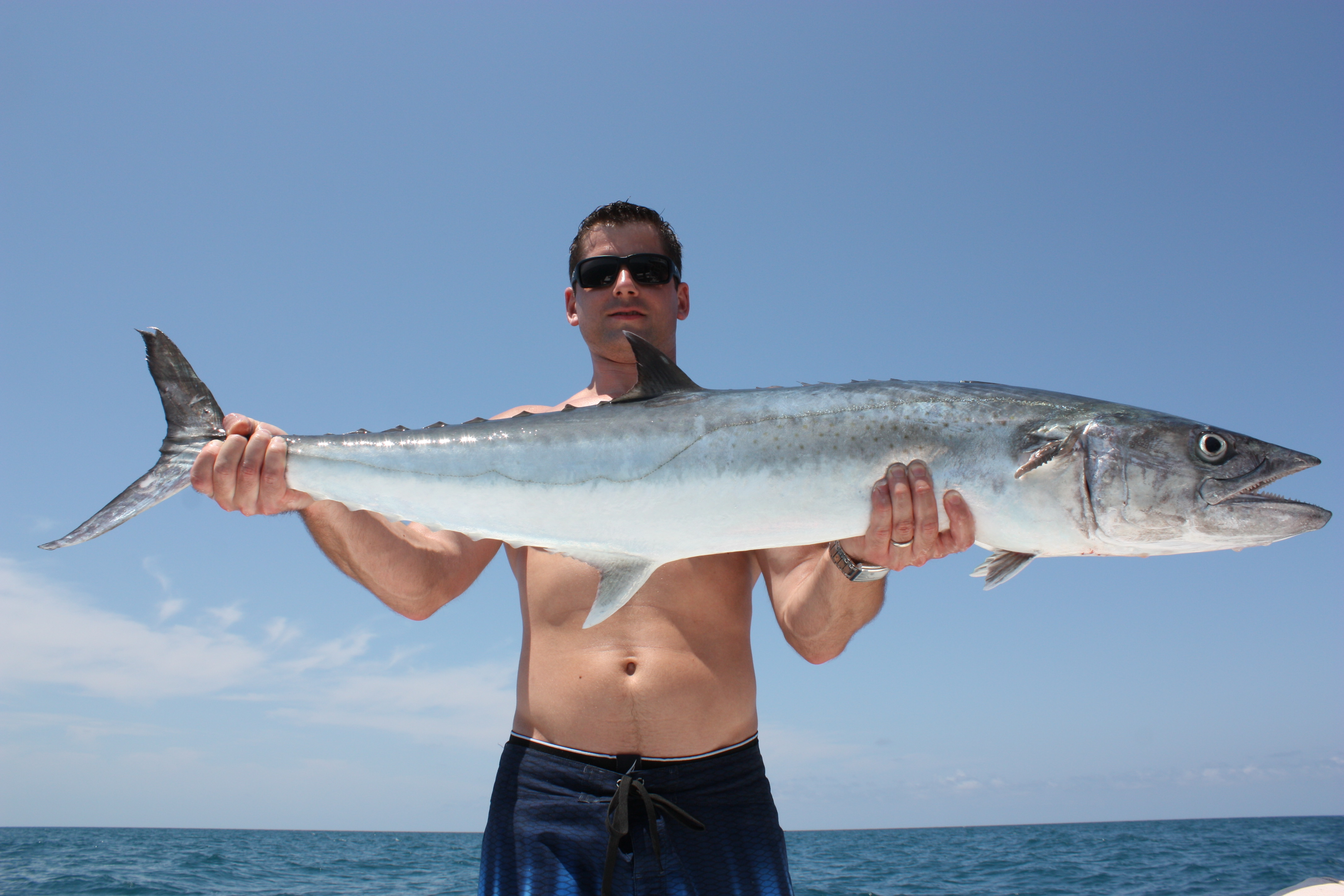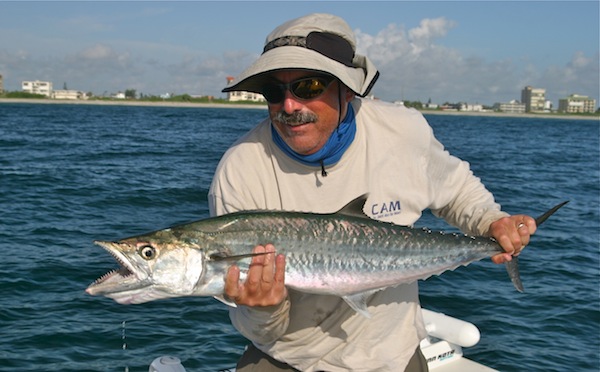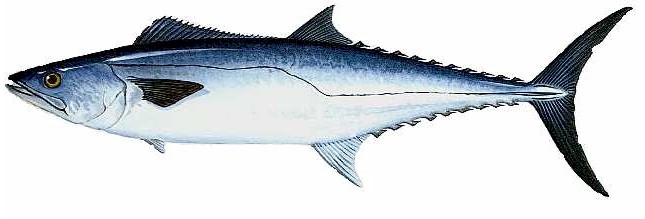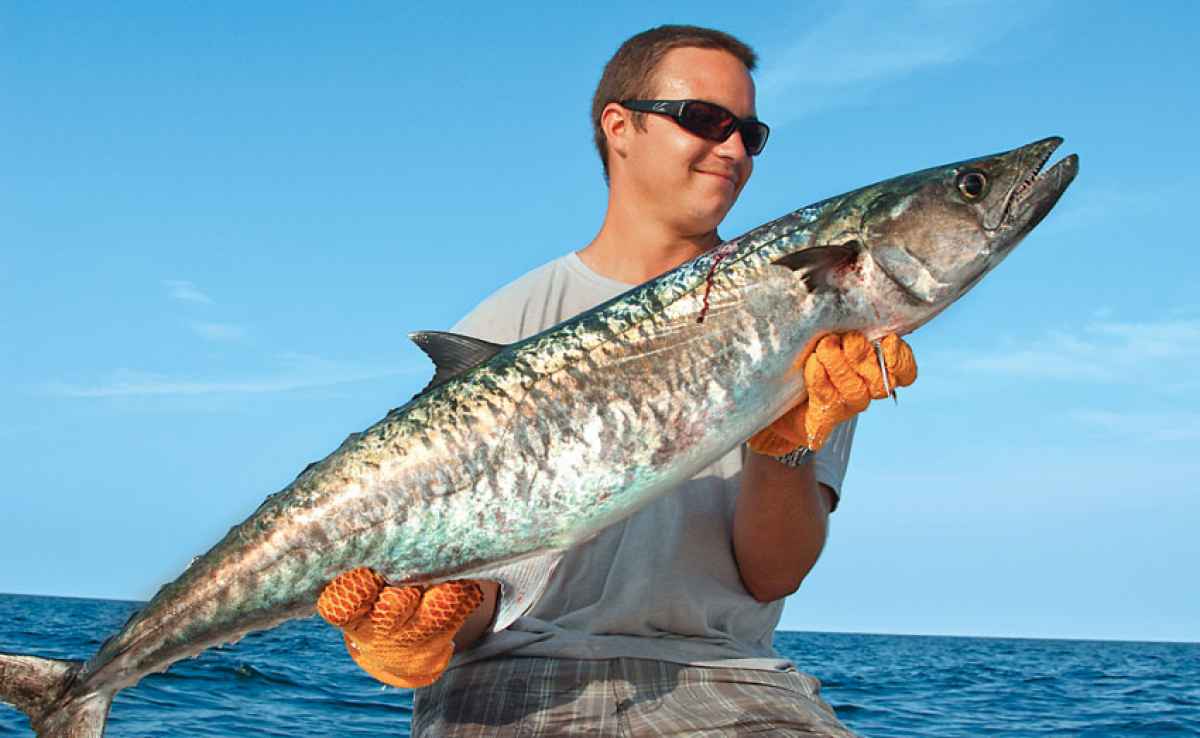
Scomberomorus cavalla
FAMILY
Scombridae
TAXONOMY
Scomberomorus cavalla (Cuvier, 1829). Based on Marcgrave’s
guarapucu, Brazil.
OTHER COMMON NAMES
French: Thazard barre; Spanish: Carite lucio.
PHYSICAL CHARACTERISTICS
Maximum size 98 in (250 cm) fork length and 79–99 lb (36–45
kg), commonly to 28 in (70 cm). Body elongate, strongly compressed.
Snout much shorter than rest of head. Posterior portion
of maxilla exposed, reaching to a vertical with hind margin
of eye. Gill rakers on first arch few, 6–11, usually 8–10. Two
dorsal fins, scarcely separated, the first with 14–16 spines.
Eight or nine dorsal finlets; 9 or 10 anal finlets. Lateral line
abruptly curving downward below second dorsal fin. Body
completely covered with small scales; no anterior corselet developed.
Vertebrae, 41–43. Back iridescent bluish green, sides
silvery, adults do not have bars or spots, but juveniles may have
spots on sides. Unlike many other species of Spanish mackerels,
adults have no black area in the first dorsal fin.
DISTRIBUTION
Confined to the western Atlantic Ocean from Massachusetts to
Rio de Janeiro.
HABITAT
Epipelagic and neritic, often found in outer reef areas.
BEHAVIOR
King mackerel are present throughout the year off Louisiana in
the Gulf of Mexico, southern Florida, and the state of Cearб in
northeastern Brazil. Large schools of king mackerel migrate
north along the coast of the United States in spring and return
south during the fall.
FEEDING ECOLOGY AND DIET
As for other members of the genus, food consists largely of
fishes and small quantities of penaeid shrimps and squids. Various
herring-like fishes are particularly important components
of the diet.
REPRODUCTIVE BIOLOGY
Spawning takes place from May through September in the western
Gulf of Mexico, particularly in September at depths between
115 and 591 ft (35 and 180 m) over the middle and outer continental
shelf. In Brazil, fecundity of females 25–48 in (63–123
cm) fork length ranges from 345,000 to 2,280,000 eggs.
CONSERVATION STATUS
Not threatened.
SIGNIFICANCE TO HUMANS
King mackerel is an important species for recreational, commercial,
and artisanal fisheries throughout their range. Eight
nations reported to FAO catches of 6.0–13.1 thousand tons
(5.4–11.9 thousand metric tons) per year from 1991 to 2000,
but several other countries combine king mackerel with other
species of Spanish mackerel, so the total catch and the number
of countries fishing for this species is higher. Commercial fisheries
in the southeastern United States use hook-and-line,
snapper hooks, gill nets, and trolled lure or small cut bait. In
Brazil, gill nets and trolling are major ways of catching king
mackerel. In the United States, sport fishing with hook-andline
is practiced in North Carolina, Florida, Mississippi, and
Louisiana. The all-tackle world game fish record is a 94-lb
(42.18-kg) fish caught off San Juan, Puerto Rico.
Photo Gallery of - King mackerel





 Animalia Life
Animalia Life